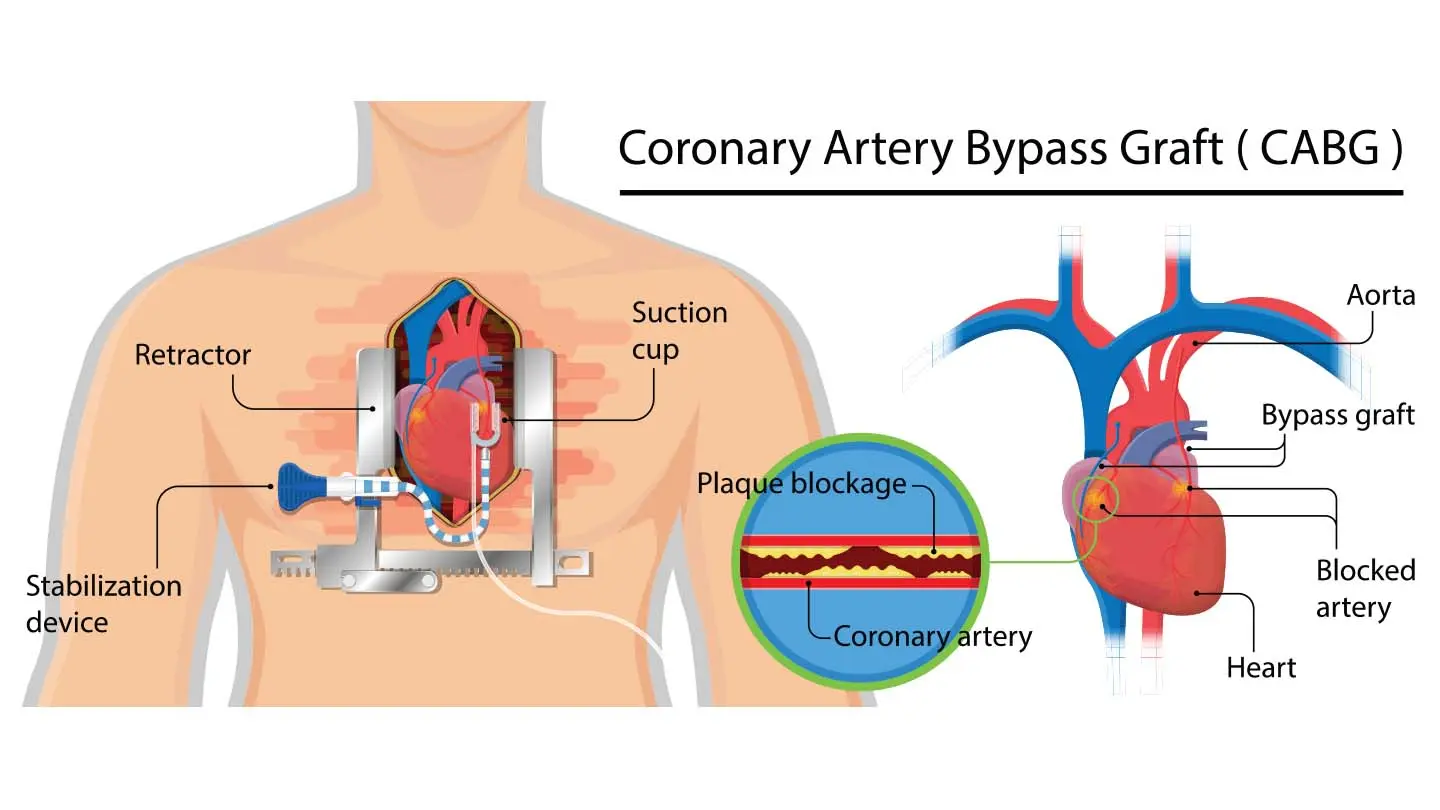Coronary Artery Bypass Grafting (CABG)
What is coronary artery bypass grafting (CABG)?
Coronary artery bypass grafting (CABG) is a surgical procedure to bypass (go around) blocked coronary (heart) arteries to restore normal blood flow to the heart muscle. It is commonly known as a heart bypass.
In a CABG, doctors will use healthy blood vessels from another part of your body, such as leg veins or internal mammary (breast) arteries, and sew them around the blocked artery. This creates an alternate path for oxygen-rich blood to bypass the blocked part of the coronary artery and restore normal blood flow to the heart.
Types of CABG surgery
There are 2 types of CABG procedures:
On-pump CABG
This procedure uses a heart-lung bypass machine to take over the functions of your heart and lungs. The machine allows your surgeon to operate on a still heart.
Off-pump CABG
This procedure stabilises parts of your heart instead of stopping your heart completely. Stabilising parts of your heart allows your surgeon to operate on the stabilised section while allowing the rest of the heart to beat and function normally.
Off-pump CABG can be done as a minimally invasive direct coronary artery bypass (MIDCAB) procedure, where small incisions are made to insert surgical instruments and operate using a video feed. MIDCAB is usually done when the arteries in front of the heart are blocked.
Why do you need CABG?
Your doctor may recommend coronary artery bypass grafting (CABG) if you have severe coronary artery disease (CAD). In severe CAD, plaque build-up in heart arteries can restrict blood flow to heart muscles and lead to a heart attack.
CABG creates a new pathway around these blockages to allow blood to flow normally to the heart. This reduces symptoms of coronary heart disease such as chest pain and lowers your risk of a heart attack.
What are the risks and complications of CABG?
The risk of complications from coronary artery bypass grafting generally depends on your overall health and may include:
- Stroke
- Heart attack
- Kidney problems
- Heart arrhythmias (Irregular heart rhythm)
- Memory loss or trouble thinking clearly. This often improves within 6 – 12 months.






